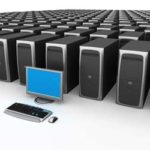From stone tablets to paper, to spreadsheets to the cloud: A history of accounting
It was about 4000 B.C. and the income of temples was being recorded in lower Mesopotamia, where modern-day Iraq and Kuwait are located. Likely etched in stone, some might argue that’s when the accounting profession started. It was a language of business and some kind of unit was recorded.
Accounting has come a long way since then. Obviously, we advanced from carving into rocks, to paper and pencil. That evolved into spreadsheets, followed by the computer and now to highly technological advancements with cloud computing. The latter allows us to manage our business’ financials from a smartphone while traveling on a train across the country.
Here’s a brief history of accounting:
Accountants were mentioned for the first time in historical records in 1300 A.D., in the Statute of Westminster, indicating their importance. Actual paper records of bookkeeping date about 30 years after that date.
Accounting was used to remember trades and barters. Italians in the 1400s used sophisticated accounting systems to develop within their banks. This is actually when the double entry bookkeeping system was born.
It would be more than 100 years, however, until some kind of standard for accounting was developed. John Weddington authored an accounting book on “howe to kepe” in 1567. The Scotts released a similar book in 1683.
It was in 1780 when Josiah Wade founded “Tribe Clarke and Company” accounting firm. It’s the oldest firm to trace its continuous existence.
As businessmen saw the importance of keeping financial records to make sure their business or bank was in healthy financial standing, laws and regulations became more prevalent.
From paper to computers
The U.S. GAAP standard was developed in the 1940s, shortly after the American Institute of Certified Public Accountants was founded. With a system in place, accounting firms across the country were able to learn formulas and write in spreadsheets (not Excel spreadsheets at this time) to speed up their methods.
It wasn’t until the 1960s when computers were even considered to be an accounting tool. Even then, however, computers were big and bulky and could only handle minimal calculations.
In 1976, Peachtree became the first sold computer system center sold for the sole use of accounting.
Intuit joined the market nearly 10 years later, with Quicken, which simplified reconciling checkbooks and tracking budgets, something that up until that point, was impossible to do using a computer. Alongside Quicken, Quickbooks became the go-to for small business accounting programs. (Intuit also developed TurboTax, which paired up nicely in accounting firms.)
Even with the birth of these programs, many businesses stuck with computer spreadsheets, which had been around since the 1960s.
Computers to the cloud
What’s hard to believe, however, is that after a wealth of innovation and updates, the technology associated with accounting software remained stagnant. It wouldn’t be until 25-30 years later that accounting software became something that didn’t require someone to sit at a desk and clunk his or her way through spreadsheets
Sure, features improved, but there was nothing revolutionary. With the advent of smartphones and tablets, however, business owners needed a way to communicate while on the go. Cloud technology, which allows a user to access important files and programs from anywhere with an Internet connection, made that possible.
Today, Quickbooks, and newer programs, like Xero accounting software, allows the business owner to check the financial health of their business from a smartphone or tablet — they don’t need to be in the office.
What’s next for accounting? Hard to tell, but expect more automation and smarter features. Now that the business owner can use cloud technology to check on their business, they need something even smarter so they can focus on growing their business, instead of worrying about the accounting of the business.


